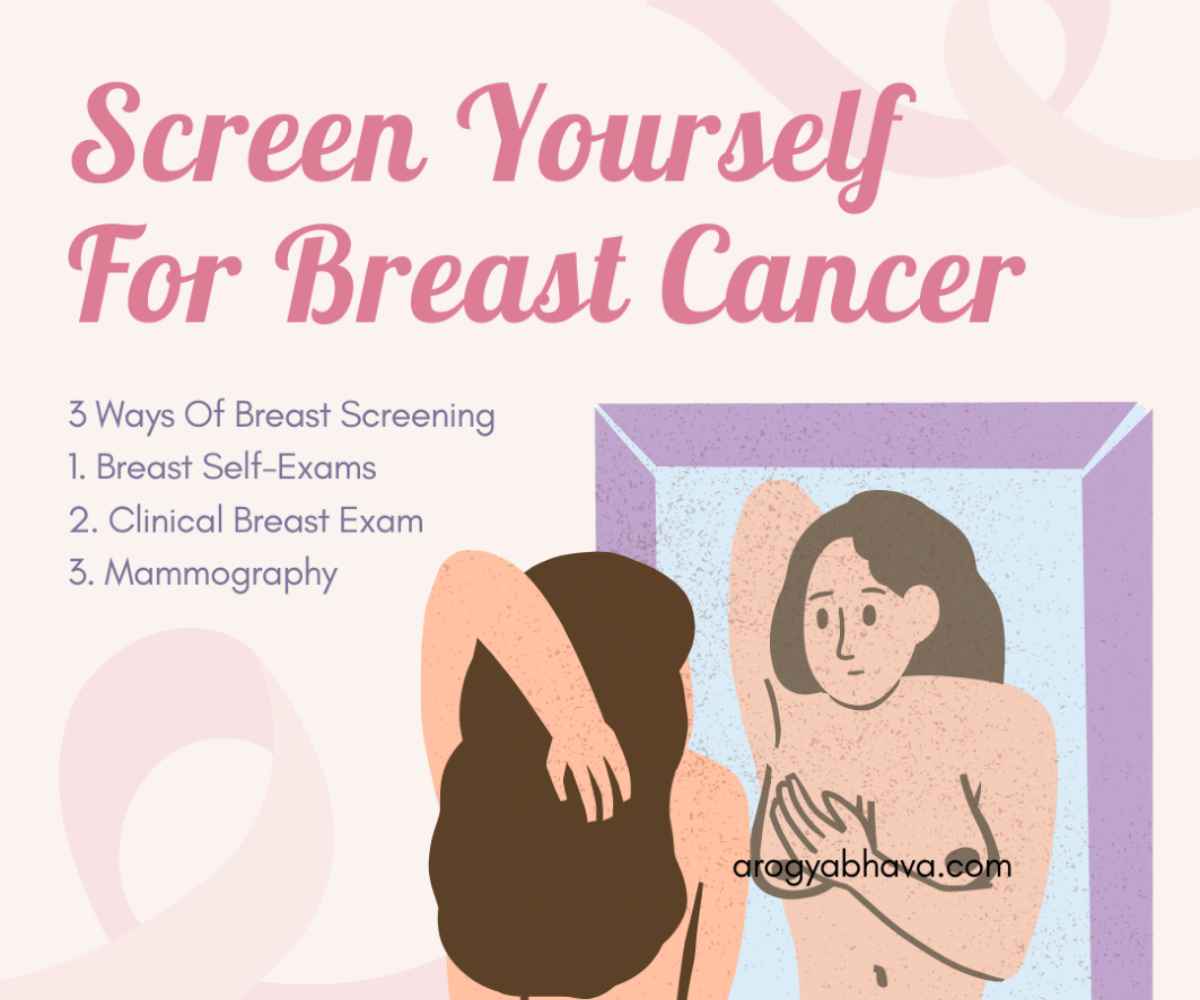Breast Cancer Diagnosis: Screen Yourself For Breast Cancer

Breast Cancer Diagnosis: In a woman’s lifetime, breast cancer will be diagnosed in about one in eight of them. There is a good likelihood that it can be recovered if caught early.
Found and treated early enough, breast cancer is usually not fatal. And detecting breast cancer as early as possible takes little effort whether you do it yourself or use technology.
Why are breast exams available?
The majority of specialists concur that routine breast screening helps identify breast cancer early. The likelihood of survival is improved the earlier the problem is discovered.
Early detection of breast cancer reduces the likelihood that chemotherapy or a mastectomy will be necessary.
The primary concern is that breast screening occasionally detects cancer that is not life-threatening or has no symptoms. You can undergo unneeded additional examinations and procedures.
3 Ways Of Breast Screening
Breast cancer early detection is the goal of breast screening.
1. Breast Self-Exams
Breast self-exams (BSEs) are a woman’s first line of defence. Examining your own breasts delivers two benefits. First, it helps you become familiar with the state of your breasts, and second, it gives you an important opportunity to discover any new changes as soon as they occur. Any lumps or thickenings that are new or unusual for you should be brought to your doctor’s attention. Ask your gynaecologist how to perform a BSE and then do one faithfully once a month, preferably a few days after your period ends when your breasts are least tender.
Some tips to keep in mind when doing your monthly BSE
- Examine the upper outer region of the breast, in the area under the armpit, or behind the nipple carefully.
- If your breasts are normally lumpy, make a note of how many individual lumps you find and their locations. Check for changes or size increases each month.
- First, check by feel, then visually. Stand in front of a mirror and look for changes in shape or symmetry of your breasts, any dimpling or dents, or a nipple that draws inward or points in a new direction.
- See your doctor to evaluate any changes or new lumps that you find during your BSE.
Also Read: Breast Cancer – Symptoms and Treatments
2. Clinical Breast Exam
A clinical breast exam (CBE) once a year is very important. This formal breast checkup needs to be performed by your gynaecologist or other trained medical professionals. During the CBE, your doctor will examine your breasts by carefully feeling all around the breasts as well as under both armpits, an area that also contains breast tissue. The CBE is a good time to ask your doctor about the normal state of your breasts (for example, you might ask whether she thinks they are especially lumpy), as well as how to perform a BSE.
2. Mammography – What is a mammogram
A mammogram is a specialized, low-intensity X-ray that can find early breast tumours too small for you or your doctor to feel. Getting a mammogram takes about half an hour. While the procedure may be somewhat uncomfortable, it’s brief and it may save your life. Screening mammograms offer one of the best chances to find breast cancer early. Conditions that may or may not indicate cancer, such as calcium deposits, can also show up on a mammogram. Screening mammograms are done periodically, often yearly, before any breast changes or lumps are noticeable.
When mammograms diagnostic are performed?
Diagnostic mammograms are performed after a breast change has appeared. Your doctor may ask you to have a diagnostic mammogram if your regular screening mammogram results are abnormal or unclear, or if she feels something unusual during a CBE. Digital mammograms are processed and read more quickly than X-ray-to-film mammograms, and can even be scanned by the computer for abnormalities. They offer better contrast (which makes viewing easier), especially for dense breast tissue. Digital images can also be manipulated easily. For example, the technician or doctor can zoom in on a questionable area of a digital image to get a better look.
Also Read: How to prevent breast cancer naturally
Genetic testing is one of the most recent advances in breast cancer screening. Until now, gene testing was reserved only for already-diagnosed cases, to determine the type of cancer present. Now, some high-risk but healthy women are turning to gene testing to figure out their risk of developing breast cancer.